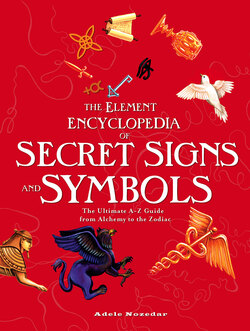Читать книгу The Element Encyclopedia of Secret Signs and Symbols - Adele Nozedar - Страница 42
APHRODISIACS
ОглавлениеThe Pomegranate Badge of Katherine of Aragon
The Greek Goddess of Love, Aphrodite, lends her name to an extensive list of foods and other weird and wonderful items that are supposed to increase the libido and enhance the chances of seduction and therefore fecundity. The issue of fertility has always been an overriding concern for humankind, and any substance that either enhances sexual prowess or increases the chance of conception has always been highly sought after.
Ancient man had a limited seasonal diet, and a bad hunt or the failure of a crop could literally be a life-or-death matter. Getting enough food to eat was an overriding concern. Chances of fertility are restricted if nourishment is poor, and so certain foods were given magical powers in the hopes that they might increase both male and female potency despite the limited diet. There is a marked differentiation between the foods that increase fertility versus the ones that enhance sex drive, and given that early man did not know about the chemical constituents of food, many aphrodisiacs were chosen as such primarily because of their symbolic significance. The Doctrine of Signatures—the notion that a plant or a feature of an animal that is similar in appearance or quality to a body part could be beneficial to the organ it resembles—had an important part to play in deciding which foods had aphrodisiac qualities. Rhinoceros horn, for example, still carries a frisson as a stimulant to sexual appetites, as does Spanish Fly. Both these ingredients, sort of mystical precursors to Viagra, were ingested by men in eager anticipation of increased virility.
Pliny the Elder and Dioscordes documented many of these aphrodisiacs as far back as the first century, and it is likely that they would have been regarded as such for some time prior to this.
The behavior and lifestyle of certain animals made them fertility symbols, too. For example, the sparrow, a prolific breeder, was sacred to Aphrodite and its blood was a popular ingredient in love potions. Steak was thought to contain all the virility of the animal it came from, the bloodier the better. Ground rhinoceros horn is symbolic of the libido but the power of the rhino is also perceived as the ultimate in male sexual energy.
This ancient, visceral belief in the power of appearances has meant that many of the original foods that were considered to have aphrodisiac powers by ancient man still carry the same meanings today, despite their actual chemical constituents. It is true to say that certain foods actually do have aphrodisiac powers purely because of these old beliefs, and generally owe more to folklore and symbolism than to fact; however, a symbol is a potent force and often the association alone is enough to bring about the desired effect. For example, a dinner date where oysters and strawberries are on the menu will leave no doubt about the intended conclusion to the evening.
To our ancestors, any kind of food that resembled the penis, the vagina, or constituent parts thereof, carried powerful suggestive meanings, although latterly our ability to analyze certain minerals and trace elements has proven that some supposedly aphrodisiac foods may actually deserve their reputation. For example, the fifty oysters that Casanova reputedly managed to swallow every day for breakfast not only resemble the female sexual parts in scent, texture, and form, but it has also been discovered that their high zinc content may indeed help enhance the libido; a large proportion of zinc is spent when men ejaculate.
For ancient man it was not always necessary for the foods to be eaten for them to have the desired effect. Some of the weird and wonderful things considered to have aphrodisiac qualities were toxic, but could work their magic simply by close proximity. The berries of mistletoe, for example, were a reminder of the semen of the Gods and the little crosses on the undersides were kisses, but it would be unwise to eat them.
Seeds, nuts, bulbs, and eggs, because they are full of potential new life, were considered as aids to fertility; snails, too, were considered to enhance sexual appetites because of the viscous fluid of the trails they leave behind, although slugs are not considered to have any aphrodisiac qualities whatsoever.
Here is a brief list of some of the foods that have been considered, at some time or other, to have aphrodisiac qualities.
